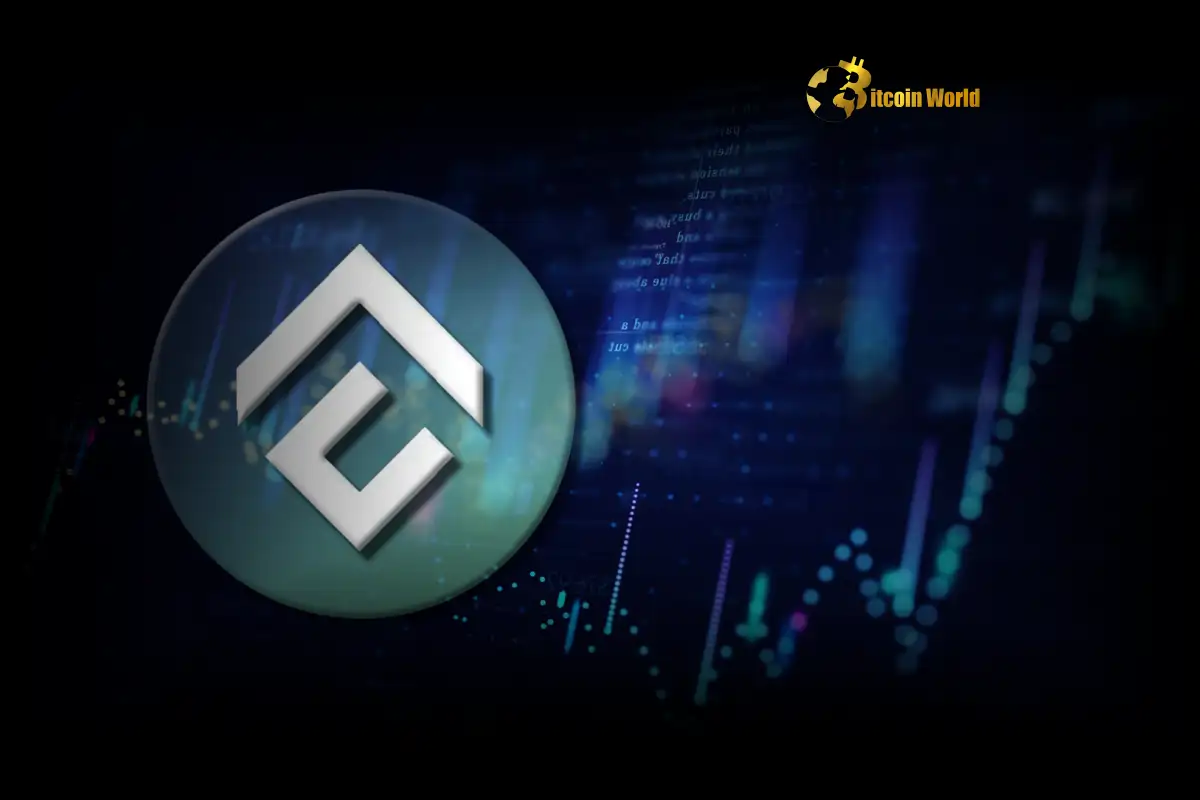Urgent Conflux CFX Burn: 76 Million Tokens Torched to Combat Inflation
0
0

Big news from the world of Layer-1 blockchains! Conflux (CFX), a network known for its unique Tree-Graph consensus mechanism, has just announced a significant move aimed at bolstering its economic stability. In a bid to counter recent inflationary pressures affecting the network, Conflux is set to execute a substantial CFX token burn.
What’s Happening with Conflux CFX?
According to an official announcement shared on the project’s Medium blog, the core team behind the Conflux blockchain intends to remove a staggering 76 million CFX tokens permanently from circulation. This isn’t just a proposal; the plan is to proceed with the burn, with the specific transaction details to be made public once the process is complete and recorded transparently on-chain.
Why this massive burn? The primary driver cited is the need to address and mitigate the effects of recent inflation observed within the Conflux ecosystem. Inflation, in the context of cryptocurrency, typically refers to an increase in the circulating supply of a token, which can potentially dilute its value if not matched by corresponding demand or utility.
The 76 million tokens represent a notable portion of the current circulating supply, and their removal is expected to have a deflationary effect, theoretically increasing the scarcity of the remaining tokens.
Why Do Blockchains Like Conflux Burn Tokens?
Token burning is a common strategy employed by blockchain projects for several key reasons. Think of it like a company buying back its own shares to reduce the number of outstanding shares. Here’s a breakdown of the typical goals behind a crypto token burn:
- Reducing Supply: The most direct effect is decreasing the total or circulating supply of a token. With fewer tokens available, assuming demand remains constant or increases, the price per token could potentially rise.
- Countering Inflation: As seen with Conflux, burning can be a direct response to unwanted inflation caused by factors like block rewards, staking rewards, or other distribution mechanisms that increase supply faster than planned or desired.
- Increasing Scarcity: Reduced supply inherently creates scarcity, which is often a desirable trait for an asset intended to hold or increase value.
- Boosting Value: By reducing supply and increasing scarcity, a burn is often intended to put upward pressure on the token’s market price.
- Signaling Commitment: A burn can signal to the community and investors that the project team is actively managing the token’s economics and is committed to its long-term health and value.
It’s important to note that while burns can be powerful tools, their ultimate impact depends on many factors, including the size of the burn relative to the total supply, overall market conditions, network adoption, and future token issuance policies.
Addressing Blockchain Inflation: A Common Challenge
Blockchain inflation is a complex topic. While some level of token issuance (inflation) is often necessary to reward participants (miners, validators, stakers) and secure the network, excessive or uncontrolled inflation can devalue the token for holders. Projects must carefully balance the need for issuance with mechanisms to manage supply.
Token burns are one of the most direct ways to combat this. Other methods include adjusting reward structures, implementing fee burning mechanisms (where transaction fees are burned instead of going entirely to validators), or introducing lock-up periods.
Conflux’s decision to burn 76 million CFX suggests they believe the current inflationary pressures warrant significant intervention to maintain the economic balance of their Layer-1 network.
What Happens Next for Conflux CFX?
While the intent to burn is clear, the process involves a formal step. Conflux plans to submit a formal governance proposal outlining the burn plan on April 28th. This proposal will likely detail the exact source of the tokens to be burned (e.g., from a foundation reserve, treasury, etc.) and the technical process for executing the burn transaction on the Conflux blockchain.
Governance proposals are a standard part of many decentralized networks, allowing the community or token holders to vote on significant changes to the protocol or ecosystem. While the announcement signals the team’s intention, the proposal stage allows for formalization and, in some governance models, community ratification, although the announcement suggests the burn is proceeding.
Investors and community members interested in the specifics will need to monitor the details released with the proposal on April 28th and the subsequent on-chain transaction data.
Key Takeaways from the Conflux CFX Burn Announcement
Here are the crucial points to remember about this development:
- Significant Burn: 76 million CFX tokens are slated for permanent removal.
- Purpose: Primarily to counter recent inflationary effects on the network.
- Transparency: The burn will be recorded on-chain, with transaction details released.
- Next Step: A formal governance proposal will be submitted on April 28th.
- Potential Impact: Aims to increase scarcity and potentially support the value of the remaining CFX tokens.
This move highlights Conflux’s proactive approach to managing its tokenomics and addressing challenges like inflation to ensure the long-term health and stability of the network and the value of the Conflux CFX token.
Concluding Thoughts: A Bold Move for Conflux?
Conflux’s decision to burn a substantial amount of CFX tokens is a clear signal that the project is serious about managing its token supply and combating inflation. This strategic move, if executed as planned and supported by continued network development and adoption, could play a vital role in the future economic trajectory of the Conflux ecosystem. As always, market dynamics are complex, but reducing supply is a fundamental economic principle often employed to enhance value.
To learn more about the latest crypto market trends, explore our article on key developments shaping blockchain price action.
0
0
 Manage all your crypto, NFT and DeFi from one place
Manage all your crypto, NFT and DeFi from one placeSecurely connect the portfolio you’re using to start.

